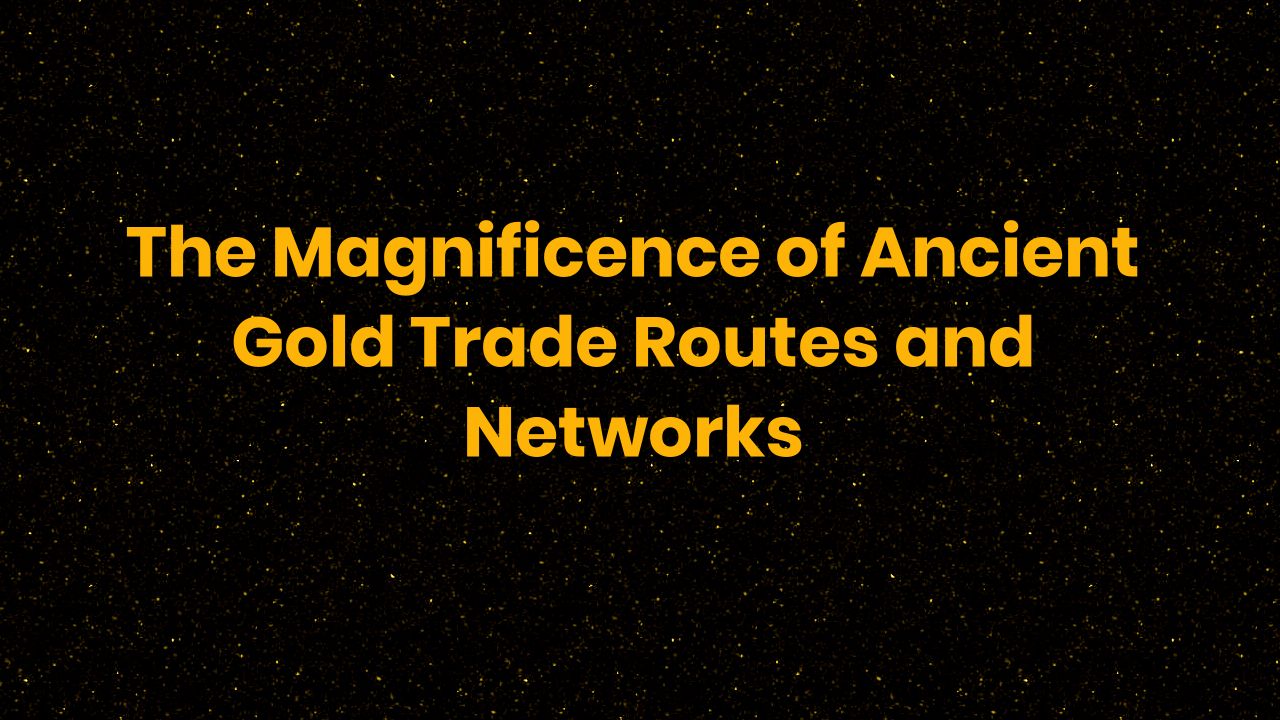
Table of Contents
Introduction: The Significance and Splendor of Gold
Gold is one of the world’s most precious and revered metals. Its value has been appreciated since ancient times, and it has been considered a symbol of wealth, power, and prestige. The brilliance and rarity of gold have made it an alluring commodity that has been traded for thousands of years. From ancient civilizations to modern times, gold has left an indelible mark on the world, and its enduring splendor continues to mesmerize people.
Early Beginnings: The Emergence of Gold Trade in Ancient Times
Gold trade routes began to emerge around 3000 BCE in Mesopotamia, Egypt, and the Indus River Valley. Gold was initially used as a luxury item for royalty, and it was also used to make jewelry and decorative items. The Egyptians considered gold a divine metal and used it to make sarcophagi and other religious items. The Greeks and Romans also prized gold and used it to make coins, jewelry, and decorative items. Gold became a symbol of wealth and status, and it fueled trade and commerce across the ancient world.
Feasting the Eye: The Aesthetic Appeal of Gold in Art and Culture
Gold’s beauty and luster have made it a popular medium for artistic expression. Artists throughout the ages have used gold to create stunning and intricate works of art. From the gilded mosaics of Byzantine churches to the golden treasures of the Aztecs, gold has been used to create some of the world’s most breathtaking artwork. Goldsmiths and jewelers have worked with gold to create elaborate ornaments and jewelry that have been adorned by royalty and aristocracy throughout history.
A Global Commodity: The Widespread Reach of Gold Trade Routes and Networks
Gold trade routes and networks spanned the globe, connecting cultures and civilizations. The Silk Road was one of the most significant trade routes, connecting Asia, Europe, and Africa. The Mayans and Aztecs traded gold along the Pacific coast of South America. The West African Gold Route was a major trade network that connected the kingdoms of West Africa with the markets of North Africa and Europe. With the advent of sea routes, gold trade expanded to include the Americas, India, and China.
Generations of Trading: The Enduring Resilience of Gold in Trade
Gold has been traded for generations, and its value has endured through wars, economic downturns, and political upheavals. In times of crisis, gold has been a safe haven for investors seeking to protect their wealth. Gold has also been used as a medium of exchange, and it has been instrumental in the development of trade and commerce. The resilience and enduring value of gold have made it an indispensable commodity in global trade.
Gold’s Impact on the World: The Influence of Gold on Politics, Economics and Society
Gold has had a profound impact on politics, economics, and society. The discovery of gold in California in 1848 sparked a gold rush that fueled the growth of the United States. The gold standard was adopted by many countries in the late 19th century, and it became the basis for international trade. During World War II, gold was used as a means of payment between countries, and it played a pivotal role in stabilizing global currency markets after the war. Today, gold is still an important asset, and it continues to shape politics, economics, and society.
Ancient Routes in Modern Times: Resurrecting Old Gold Trade Routes amidst the Global Marketplace
The globalization of trade and commerce has brought ancient gold trade routes back to life. Today, gold is traded on a global scale, and it is bought and sold by investors, jewelers, and central banks. The resumption of gold trade along ancient routes has created new opportunities for economic growth and international cooperation. The revival of these routes has also led to the restoration of ancient architectural and cultural heritage sites.
Conclusion: Embracing the Elegance and Endurance of Gold
The magnificence of ancient gold trade routes and networks is a testament to the enduring appeal of this precious metal. Gold has played a significant role in shaping human culture and civilization, and it continues to be an important commodity in the modern world. The allure of gold lies not only in its brilliance and rarity but also in its ability to bring people and cultures together. As we look to the future, gold will continue to inspire and captivate us, reminding us of our shared heritage and common goals.





